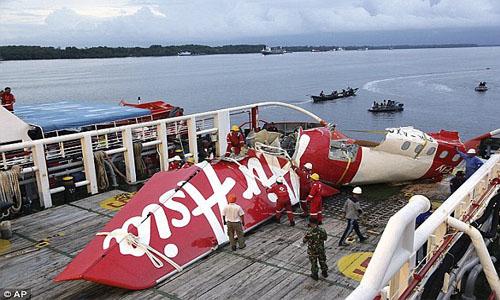Faulty rudder system major factor in AirAsia crash off Indonesia
A fault with the rudder control system was a major factor in the December AirAsia plane crash into the Java Sea that left 162 people dead, Indonesian investigators said Tuesday.
Repeated problems with the system led to the pilots disengaging the autopilot in stormy weather in a bid to fix the situation, and then losing control of the Airbus A320-200, Indonesia's official National Transportation Safety Committee said.
In their final report into the crash, investigators said the soldering on the Rudder Travel Limiter system -- which helps control the rudder's movement -- was cracked, leading it to send repeated warning systems to the pilots.
When they received the fourth warning, the pilots pulled circuit-breakers on part of the aircraft's control system in a bid to reset the system. This turned off the autopilot, and the plane then started to roll, the report said.
"Subsequent flight crew action resulted in inability to control the aircraft," said the report.
The plane went into a "prolonged stall condition that was beyond the capability of the crew to recover", it said.
It added the flight data recorders did not indicate the weather had affected the aircraft.
Related Posts

